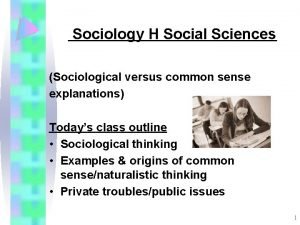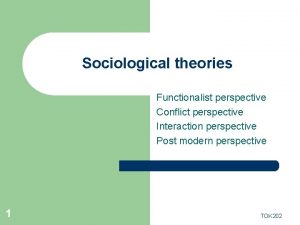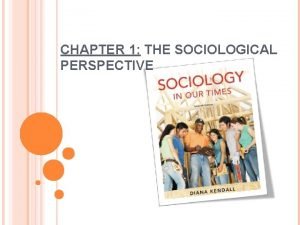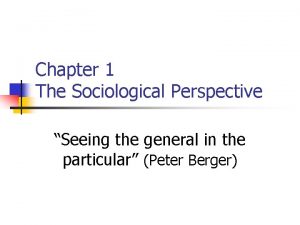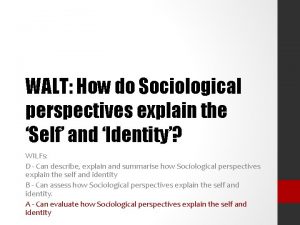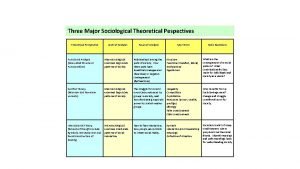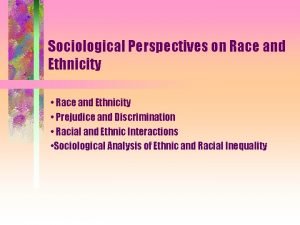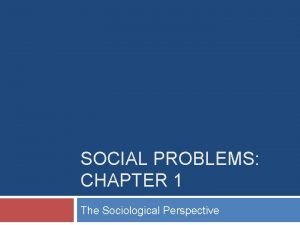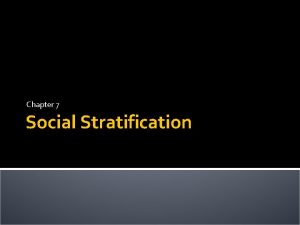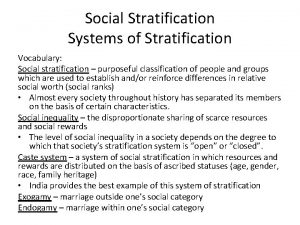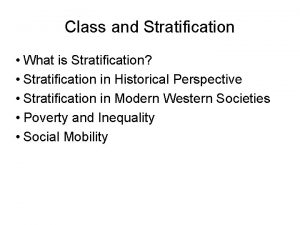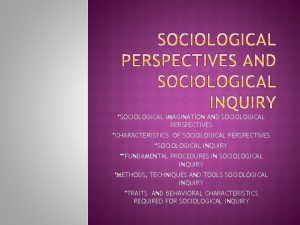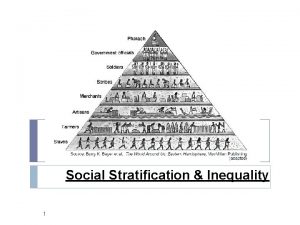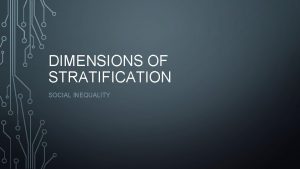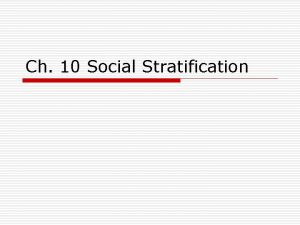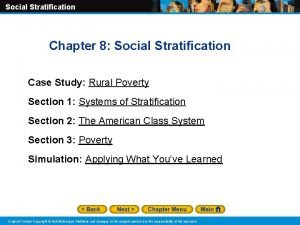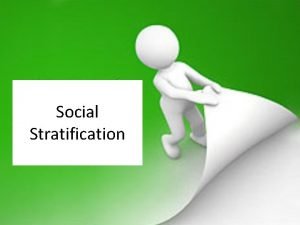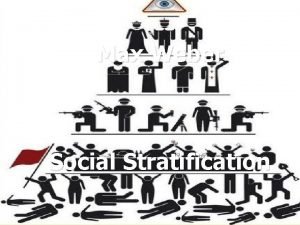Social Stratification Explanations Each sociological perspective explains social
















- Slides: 16


Social Stratification Explanations Each sociological perspective explains social stratification in a different way.

Functionalism The most qualified fill the most important positions. People are rewarded for their efforts. Inequality exists because certain jobs have more importance. Money pays for sacrifices. I. e. More money for more education, talent, training.

Conflict Theory Inequality exists because people are willing to exploit others. Stratification is based on force rather than choice. Based on Marx ideas

Karl Marx Predicted that society would be reduced to two social classes Bourgeoisie- own means of production (rulers) Proletariat- workers (ruled) Capitalists legitimize their behavior. False Consciousness-adoption of the ideas of the dominant class by the less powerful class

Symbolic Interactionism People are socialized to accept existing stratification. It’s not fair to challenge the system. Looking-Glass Self Perspective Causes of different self-concepts

Poverty

Absolute Poverty The absence of enough money to secure life’s necessities (food, safe place to live)

Relative Poverty A measure of poverty based on the economic disparity between those at the bottom of a society and the rest of the society

Identifying The Poor How are race and ethnicity related to poverty? How are gender and age related to poverty? Feminization of poverty, a trend in society in which women an children make up an increasing proportion of the poor

International Poverty Line Minimum level of income deemed adequate to live $1. 25=0. 470 Fils 12. 7 % of all Americans are below the poverty line. (37 million people)

Responses To Poverty Problem Focus on self-improvement vs. temporary relief Work Experience/Opportunity Programs Youth Training Programs Welfare Temporary economic assistance for needy I. e. Food stamps, Tax Breaks, Medical Leave

Social Mobility The movement of individuals or groups between social classes

Types Of Social Mobility Horizontal Mobility- a change in occupation within the same social class Vertical Mobility- a change upward or downward in occupational status or social class Intergenerational Mobility- a change in status or class from one generation to the next

Caste System A stratification structure that does not allow for social mobility Social status is inherited and cannot be changed. Relationships are limited. Religious, biological, superstitious, or legal justification I. e. Indian Caste System

Open-Class System A system in which social class is based on merit and individual effort Movement is allowed between classes. Based on ideas, abilities, education, and resources In reality, opportunity limits open-class systems.
 Sociological imagination vs sociological perspective
Sociological imagination vs sociological perspective Examples of common sense and sociological explanations
Examples of common sense and sociological explanations The sociological perspective stresses that
The sociological perspective stresses that Functionalist vs conflict theory
Functionalist vs conflict theory Maggie mendez
Maggie mendez Macro sociology examples
Macro sociology examples Chapter 1 the sociological perspective
Chapter 1 the sociological perspective Peter berger sociological perspective
Peter berger sociological perspective Herbert spencer theory
Herbert spencer theory Sociological perspective of crime
Sociological perspective of crime George herbert mead i'' and me
George herbert mead i'' and me Three major theoretical perspectives in sociology
Three major theoretical perspectives in sociology Pluralsim
Pluralsim The sociological perspective is a point of view that
The sociological perspective is a point of view that Sociological perspective
Sociological perspective Sociological perspective on mental health
Sociological perspective on mental health What is sociological perspective
What is sociological perspective

